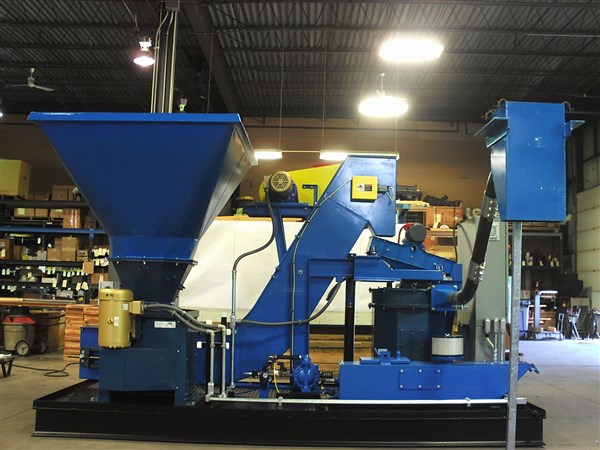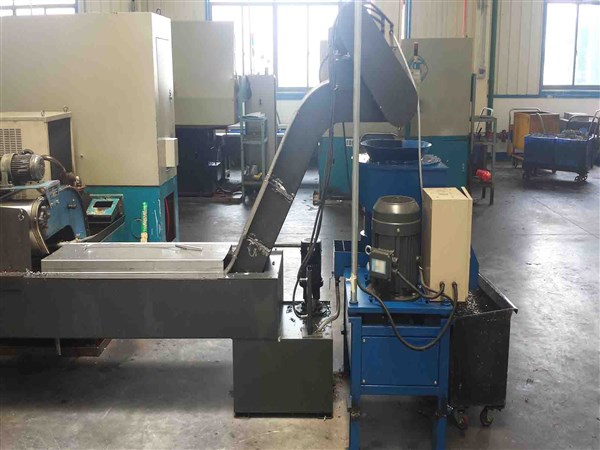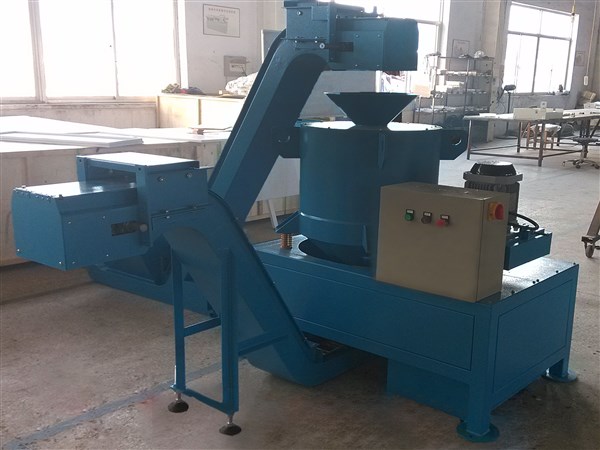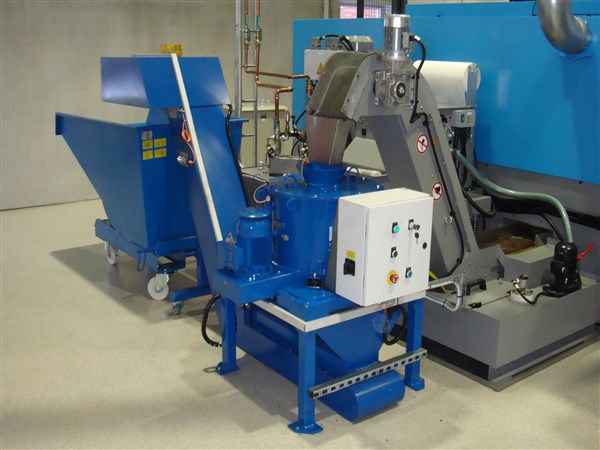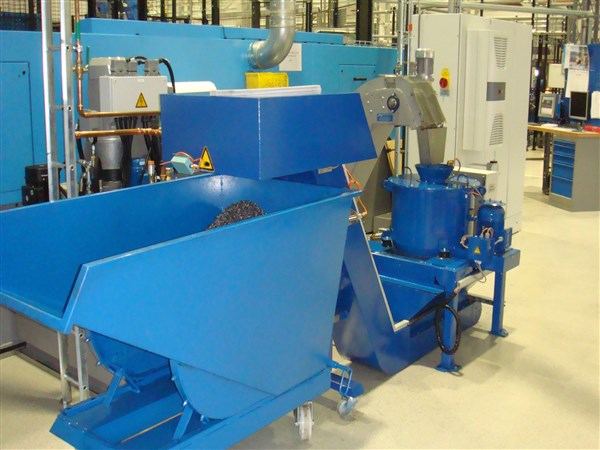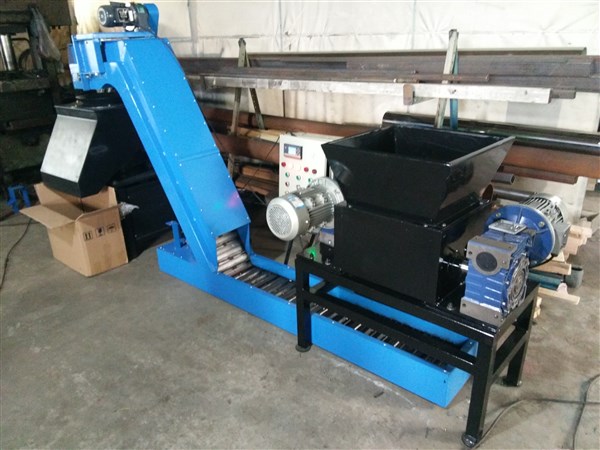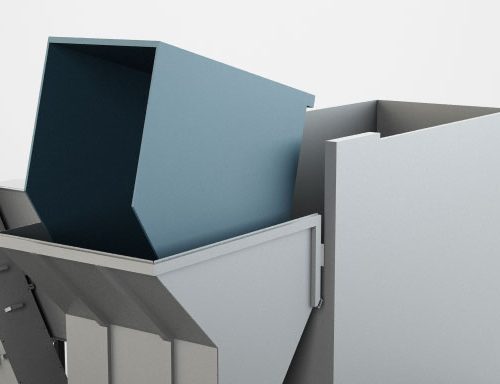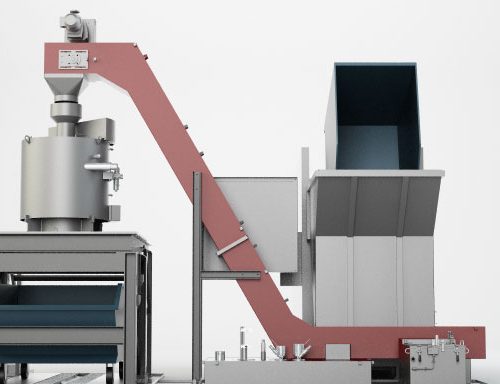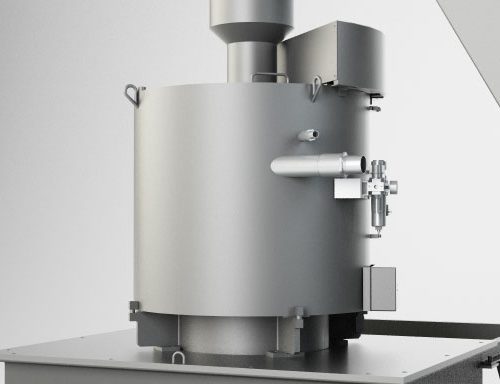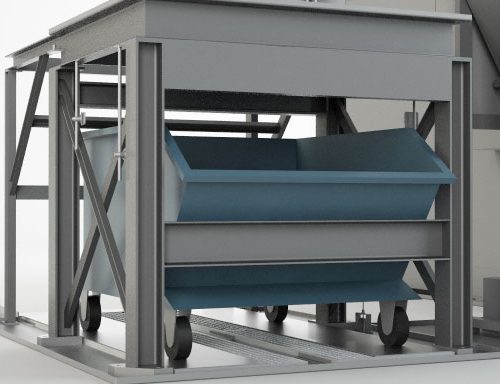Chip Processing Systems
A complete chip processing system not only automates waste management, it improves productivity, reduces harmful exposure of workers to injury, and reduces environmental and business risk.
Aydas is helping companies in the metal working industry become “Green” by providing state of the art scrap metal reclamation and recycling systems.
In addition to providing systems to achieve environmentally compliant operations and facilities, a metal chip processing system can offer other important benefits.
Advantages of Using a Aydas Chip Processing System
- Automatic Recovery of Cutting Oils and Coolants
- Volume Reduction of Metal Turnings and Chips
- Reduce Labor Costs
- Increase the Value of Scrap and Fluids
- Improve Housekeeping
- Improved plant air quality, reduced plant traffic, improved ergonomics, reduced injuries associated with the handling of sharp metal scrap
- Reduced scrap transportation costs while freeing up valuable manufacturing space
WHY CREATE A DE-OILING OR CENTRIFUGATION SYSTEM
Those who handle swarf in factories have one extra problem to deal with and the solution is often not simple. Aydas aims to transform swarf from an expensive and risky daily problem into a precious, cost-effective, environmentally-friendly raw material.
When the scrapper collects swarf soaked in oil or emulsion, it has a value much less than the market average because the weight loss that the swarf will undergo later after de-oiling is taken into consideration, as well as the costs incurred for this operation, in addition to the risk of handling harmful pollutants such as oil or emulsion.
It has been shown that on average, an oil quantity equal to about 7% of the weight of the swarf can be retrieved, this means that for an average flow of 100 kg/h of material, working in 3 shifts, it is possible to recover a good 168 kg of oil a day. Within a year (220 days) it is then possible to retrieve about 40,000 kg of oil, with an estimated annual savings of as much as €200,000 for oil, €5/kg.
Dry swarf is therefore more appreciated and valued by swarf scrappers. In addition, de-oiling of the swarf allows for cost savings thanks to recovery of the coolant and reduction of disposal of special waste such as oil or emulsion.
The oil can be returned straight to the processing machine. The de-oiling system is rapidly paying its way and has a very long operating life.
More modern processing machines require highly pure oil. Here too, the oil recovered by the chip processing system can be used. Just one intermediate step is needed: Aydas cleaning centrifuges perform the final cleaning of the recovered oil.
Aydas’s swarf equipment includes
- Manual swarf centrifuges
- Automated swarf centrifuge systems
- Swarf Crushers
- Conveyors
- Swarf storage silo’s
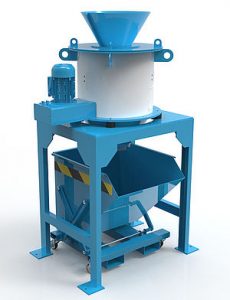
Centrifuges
SWARF CENTRIFUGING
In metal cutting operations where cutting fluids are used, the swarf absorbs a large amount of coolant. What is desired is dry chips that are easy to handle and cutting fluids that can be reclaimed and fed back to the cutting operation, either directly or via a filtering stage. Centrifuging, filtering of the cutting fluid and removal of the dry swarf can be handled by a continuously working swarf handling system, where manual labour often can be entirely eliminated.
Economy
Less than half of the cutting fluid in the swarf can be recovered through static settling and draining. By means of a wringer or centrifuge the recovery can be increased to 90%. Aydas can show you centrifuging installations which can be paid-off in a few months.
The Environment
Through continuous centrifuging of swarf and reclamation of the cutting fluid, spill is avoided. Centrifuging and recovery of cutting fluids also means that your company takes on its responsibility for the environment and care for the waterways.
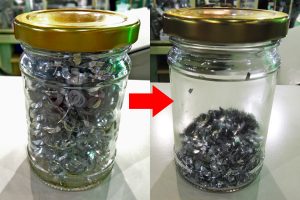
SWARF CRUSHING / SHREDDING
The first stage when treating swarf is the crushing. Bushy swarf is crushed or broken down to a uniform short chip material. It is important that the crusher has the ability to dissolve large swarf bundles and give an even flow of crushed swarf. This simplifies the transport and treatment of swarf, such as centrifuging. Aydas have a wealth of knowledge and experience and can supply the right crusher for your process.
Economy
Crushed, short chips carry a higher price than long swarf, because it is easier to handle when re-melted in steel works and foundries. Long swarf can sometimes be used when melting in cupola furnaces but not always. In addition to the direct economical gain from crushed swarf, there are even other advantages. The volume is reduced three to six times, which gives lower cost for internal and external transportation and less storage space is required.
The Environment
Bushy swarf and large swarf bundles always contain a lot of fluid and because it has a large surface and low density it will corrode fast. When such swarf is charged in melting furnaces it causes heavy smoke, which causes a heavy load on baghouses. Only after crushing the fluid can be removed and the density be reduced.
Manual Swarf Centrifuges
Manual swarf centrifuges or swarf spinners are ideal for applications involving a mix of different swarf types or low volumes. They can recover oil or coolant and reduce moisture/liquid content down to just 1-2%.
In a typical machine shop using neat cutting oil our centrifuges can reduce oil usage by 80%.
Our manual centrifuges can handle stringy or chipped swarf oil recovery from various applications, including CNC machining swarf, gear manufacturing, fastener manufacturing, spring manufacturing, gun drilling, sliding head machining, plated components etc
Other applications: drying, rinsing, degreasing, washing, coating.
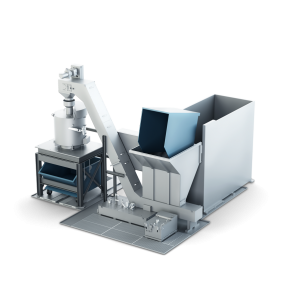 Automated System
Automated System
System components in automatic operation
For its planning task Aydas takes account not just of the current situation, but also of possible future scenarios: in partnership with you, we create a future-proof system that will serve you dependably for many years to come. Once you have settled on a specific type of centrifuge, the plant components are planned. As well as the centrifuge itself, these include lift-and-tilt devices, crushers, and feed and discharge conveyors. These components are chosen as required, to give you always the best solution.
HOW DOES IT WORK?
The centrifuge is fed continually by a conveyor or screw. If long chips need to be processed, a crusher must be installed upstream of the centrifuge to make the chips short and pourable before they reach the system. If coarse parts are present, a vibrating screen can be incorporated, or a crusher with coarse particle ejector
De-oiling process: depending on type, the chips are delivered to the centrifuge continuously or in cycles. In the centrifuge, the chips are accelerated to the defined speed of rotation. The oil is separated from the chips by special slottedhole screens. The de-oiled chips fall down and out of the centrifuge.


